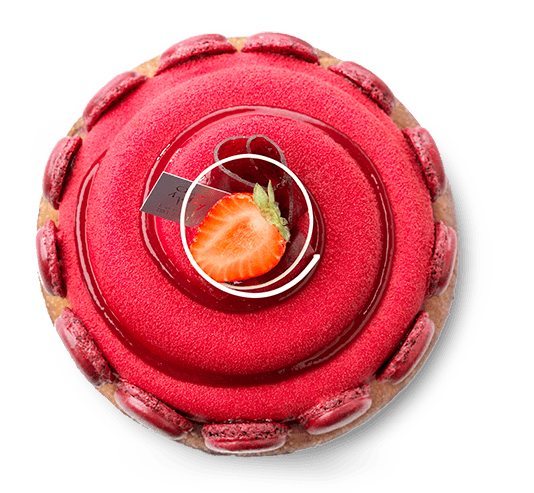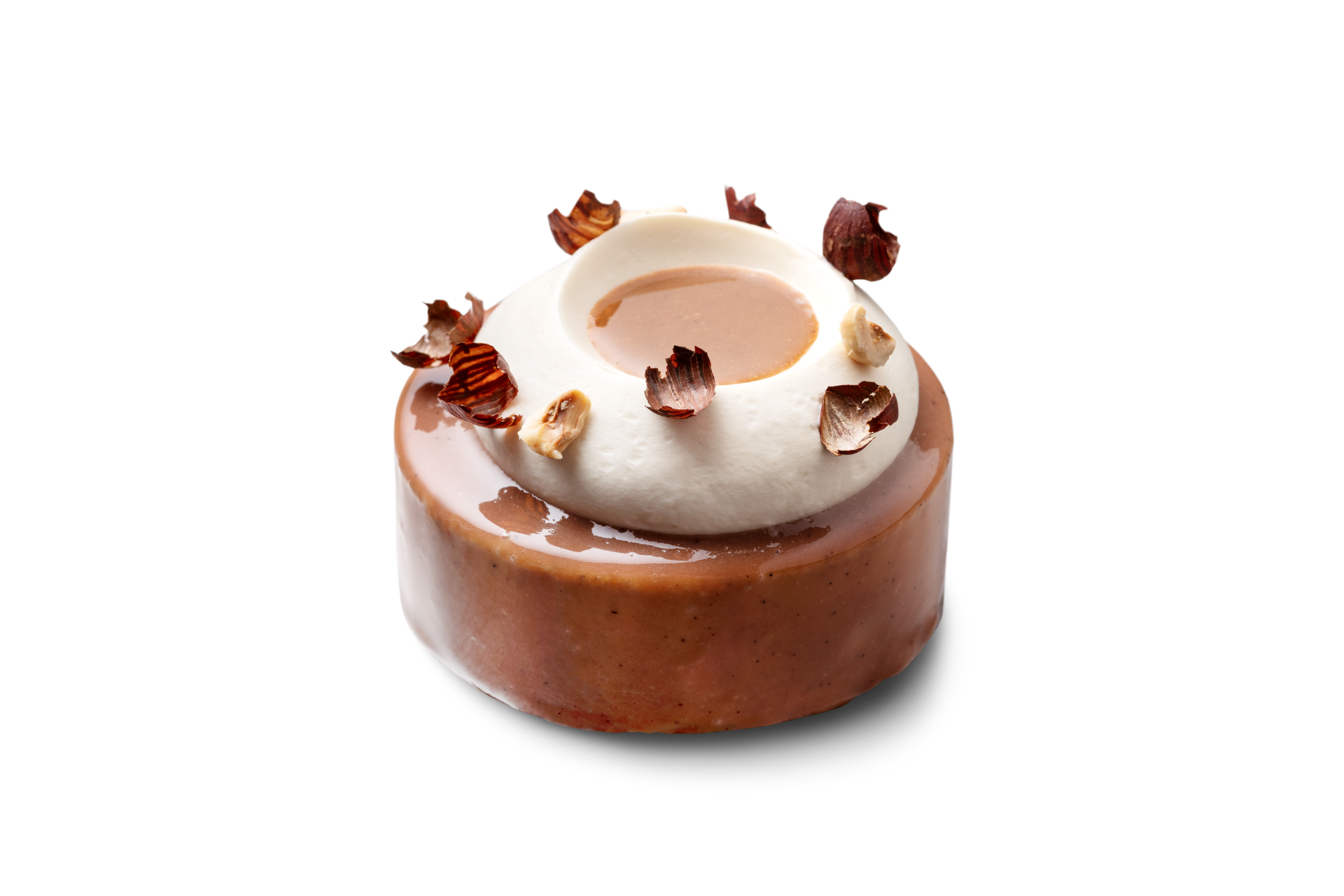Chocolatier Julius Persoone is carving his own path within the family business.
Chocolatier Julius Persoone was once set the task of capturing the taste of a sensual grandmother in a chocolate. ‘You’ll probably say: that’s not possible. But my immediate thought was: what can we do? I made a nipple from fermented raspberry and a ganache with the flavour profile of breast milk. You shouldn’t limit yourself.’ As the son of one of Belgium’s most famous chocolatiers, Julius is taking his own, utterly idiosyncratic and inspired course.

In 2023, The Chocolate Line, a chocolaterie with shops in Antwerp and Bruges, was named ‘Flanders Chocolatier of the Year’ by Gault&Millau. Founder and owner Dominique Persoone says on his social media channel that he was left speechless by the award, which he regards as a fine gift to mark the thirtieth anniversary of his business. He adds: ‘During the first wave of COVID there was a lot of uncertainty. Almost our entire production team left. I gave my son Julius the opportunity to create a whole new group as head of production. Two years later, look at the world-class result!’
This is a somewhat sanitised version of the story of Julius Persoone’s arrival at The Chocolate Line. Dominique’s son was working as a chef at starred restaurants in Belgium and, he says, fell in love with chocolate and pâtisserie there. However, he found the range very limited. ‘It was always strawberry or passion fruit. I don’t find that exciting. I thought: I want to keep going with chocolate, just like my father. But I want to do things that nobody’s ever done before. My father has been a pioneer in this field, but I really wanted to take things a whole step further. However, that approach clashed head-on with the old team at The Chocolate Line. I wanted to improve and innovate, not get stuck with old recipes. Within a month, the entire team of employees had left – all but one. My father was furious, but it gave me the opportunity to introduce a completely different way of thinking. I built a new team with all kinds of people who came from starred restaurants. Because of COVID, they didn’t have any other work at the time and they attracted each other to The Chocolate Line. I started a process of thinking things over with them. What should a chocolate actually look like? I don’t want to make chocolates that you put in your mouth mindlessly. My ambition isn’t to make chocolates that you eat by the half-kilo in front of the telly. I don’t see our work as turning out chocolates to go with a cup of coffee: we’re creating a dish and an emotion. I want to make something that people will cut in half, examine and analyse with care and curiosity after their meal. I think it’s important for them to think about why the chocolate was made exactly like that.’
It was by no means clear when he was young that Julius would give his heart to chocolate the way his father had done. At the age of seventeen, Julius was growing two hundred and fifty different types of tomatoes in four different greenhouses and had over a thousand tomato seeds at home. At that time, he was one of the leading experts and growers of tomato varieties in the whole of Belgium and the youngest member of an international club of tomato lovers, Tater Mater Seeds Europe. Its members swap tomato seeds with each other; some of these are so exclusive that only five people anywhere in the world have them in their possession. It may have been this hobby that got out of hand that put him on the trail of the local farmers.
‘I was living in Damme, among the farmers in the middle of nowhere. In the summer, I would see crates of apples and boxes of strawberries standing outside, on sale for next to nothing. I found a lot of local ingredients there that the farmers wanted to get rid of because they weren’t selling. As a pastry chef, I thought about our freezer full of pineapple and passion fruit purées, and I felt bad about it. We have good local farmers here, selling excellent products for next to nothing. But if I wanted to help them, I would have to use a strawberry purée in December. That’s how the fermentation lab was created.
If you use fermentation, you don’t need refrigeration and you can use local produce all year round. That was important to me. My philosophy within the business is therefore: zero waste. For example, we make vinegar and a miso fermentation from mint stems, which others would tend to throw away once they’ve removed the leaves. I know the growers who grow our products, or we grow the ingredients ourselves. I know how much work goes into this and how much love and perfection it requires. You shouldn’t throw any of that away.’
Julius is actively experimenting. For example, he uses ultrasound in his ganache to break down flavour molecules and build them up to twenty-five times larger, and creates his own colourings and jelly by means of fermentation. ‘The fermentation process separates. The lower part is the pigment. We dry this out and I spray my chocolates with it: it’s our own colouring. With the upper, liquid part of the fermentation I make a gel.’ The pulp of citrus fruits, which would normally be thrown away after the zest and juice has been taken, is used to make kosho at The Chocolate Line. ‘We ferment and salt the pulp and make a kosho from it: kosho is a Japanese technique for making a perfumed citrus paste. It’s unique and it’s pure gastronomy. That’s how I want to work.’
One ambitious experiment is the chocolate with artificial saliva, which Julius developed together with Dr Thomas Moors specially for throat cancer patients. ‘People who have to undergo chemotherapy lose the ability to produce saliva themselves, which affects your sense of taste. The big question, though, is: in what way? We’ve created a taste profile for a number of people. For example, I gave someone strawberry, mint, bell pepper and basil prior to chemotherapy. After chemo, I got him to try these flavours again, but blindfolded. It was clear from this that strawberry and mint are two flavours that are very difficult for throat cancer patients to define after chemotherapy. We’ve made a gel of artificial saliva based on a saliva powder. When you taste it, it’s as if you’re ingesting your own saliva. I then made a chocolate with a strawberry and mint gel and an artificial saliva gel. The chocolate is based on a sourdough and the spray with which I finish it is based on spirulina and activated carbon. Finally, I add a few dots of freeze-dried strawberry. I believe that the overall picture has to be right: the activated carbon and spirulina are good for your stomach and your health, while the acids in the chocolate make you produce more saliva than normal. The effect of this chocolate on throat cancer patients is incredible. People who haven’t tasted anything for a long time burst into tears because they can distinguish flavours. This is what motivates me. I think it’s ground-breaking. When I say in interviews that I want to be the best in the world, I mean that I want to inspire people worldwide with completely innovative insights. It’s not just about chocolates. You can go as far as you can think.’
Julius Persoone has a completely unique way of thinking. He translates fashion, art and media into chocolate form and refuses to be limited by anything or anyone. He has perfected the chocolate with the flavour of freshly mown grass – a brainchild of his father – and engaged in an exclusive collaboration with the MoMu Fashion Institute in 2023, assembling a box of chocolates that express the vision of a number of leading Belgian fashion designers such as Walter Van Beirendonck, Dries Van Noten and Raf Simons. ‘People were queuing up when those boxes went on sale: within half an hour we’d sold five hundred. The signed versions went in numbered boxes for 3,200 euros. This shows that exclusivity can also be achieved through social media – as long as you tell your story the right way or, for example, regularly post “behind the scenes” videos. Customers are becoming increasingly picky, and rightly so, as everything is growing more expensive. So they prefer to buy chocolate that has a good story.’
The cocoa used at The Chocolate Line is grown on its own plantation in Mexico. As a result, Julius and Dominique Persoone know who is working on the plantation and can be sure that no one involved in their chocolate is being exploited. They can also ensure that no pesticides are used. Chili peppers are also grown on the plantation. Mixed with water, chili pepper extract can be sprayed over the cocoa trees as a natural pesticide. Part of the plantation where cocoa or spices can’t be grown is used as a home for animals that have been mistreated as circus animals or pets. Through The Chocolate Line WE CARE foundation, they are eventually given the chance to be released back into the wild.
Try Julius' recipe for a spicy Mole Bar
Read about the origins and history of the Croissant!
Discover more



